Vertebrate Skeletal Anatomy I
John Merck
Outline of the Vertebrate Axial Skeleton

"Finny tribes"
Before we proceed, know the names of the fins of a proper fish. Each tells an interesting evolutionary story:- Midline fins:
- Dorsal fin (originally jawed vertebrates had two, but the number varies in living members)
- Caudal fin
- Anal fin
- Paired fins:
- Pectoral fin
- Pelvic fin
Caudal fin morphology:
At the animal's rear end, a caudal fin, supported by a post-anal tail, aided in propulsion. Among early vertebrates, caudal fins generally took one of three forms, depending on the orientation of the notochord:- Protocercal - the notochord is straight with fin rays symmetrical top-to-bottom:
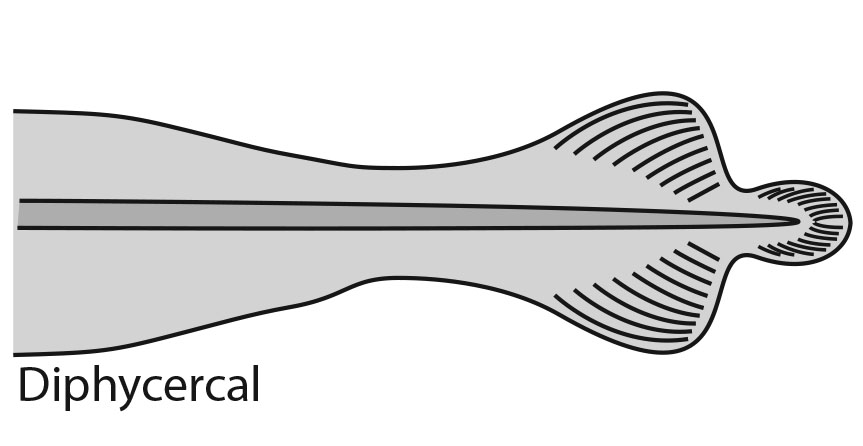
- Diphycercal - the notochord is straight with a secondary set of fin rays:
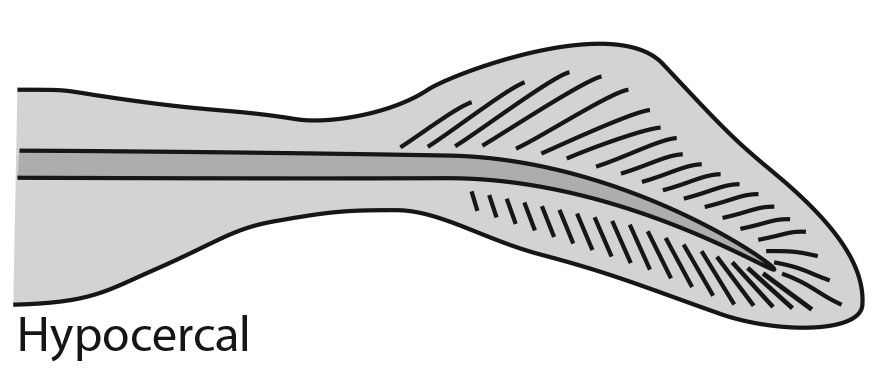
- Hypocercal - the notochord invades the lower lobe of the caudal fin
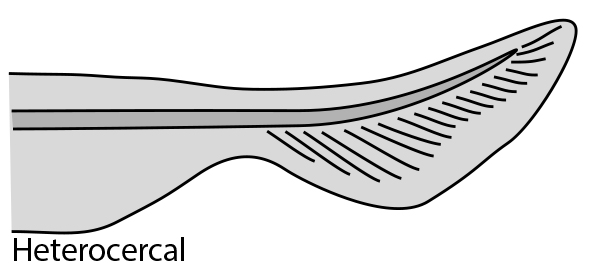
- Heterocercal ("epicercal" of some authors) - the notochord invades the upper lobe of the caudal fin
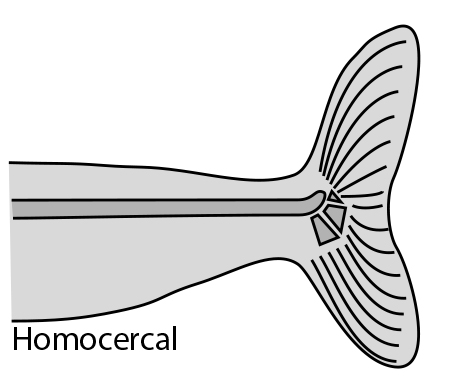
- Homocercal A derived special case of heterocercal where the tail becomes superficially symmetrical
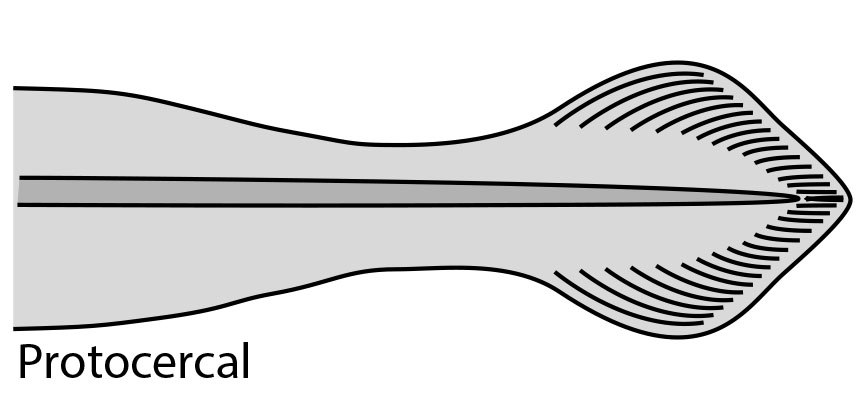
Test yourself:
Regions of the skeleton:
- The Axial Skeleton: contains the vertebral column, skull, and ribs.
- the Appendicular Skeleton: contains the limb girdles and limbs.
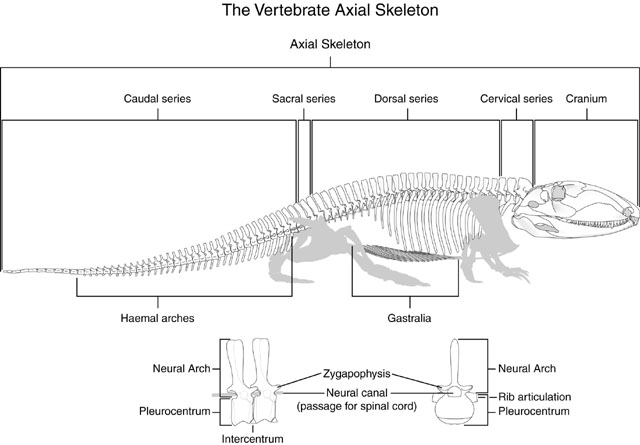
The Axial Skeleton:
- Regions of the land vertebrate vertebral column: Whereas in aquatic vertebrates, each part of the vertebral column has the same function - to support the myomeres, in land vertebrates, the following different regions are functionally distinct. Each region may contain both vertebrae and ribs.
Vertebral elements are invariably endochondral.
- Cervical series: The vertebral column of the neck.
- Dorsal series: The vertebral column of the torso.
- Sacral series: The vertebrae and ribs that articulate with the pelvic girdle.
- Caudal series: The vertebral column of the tail.
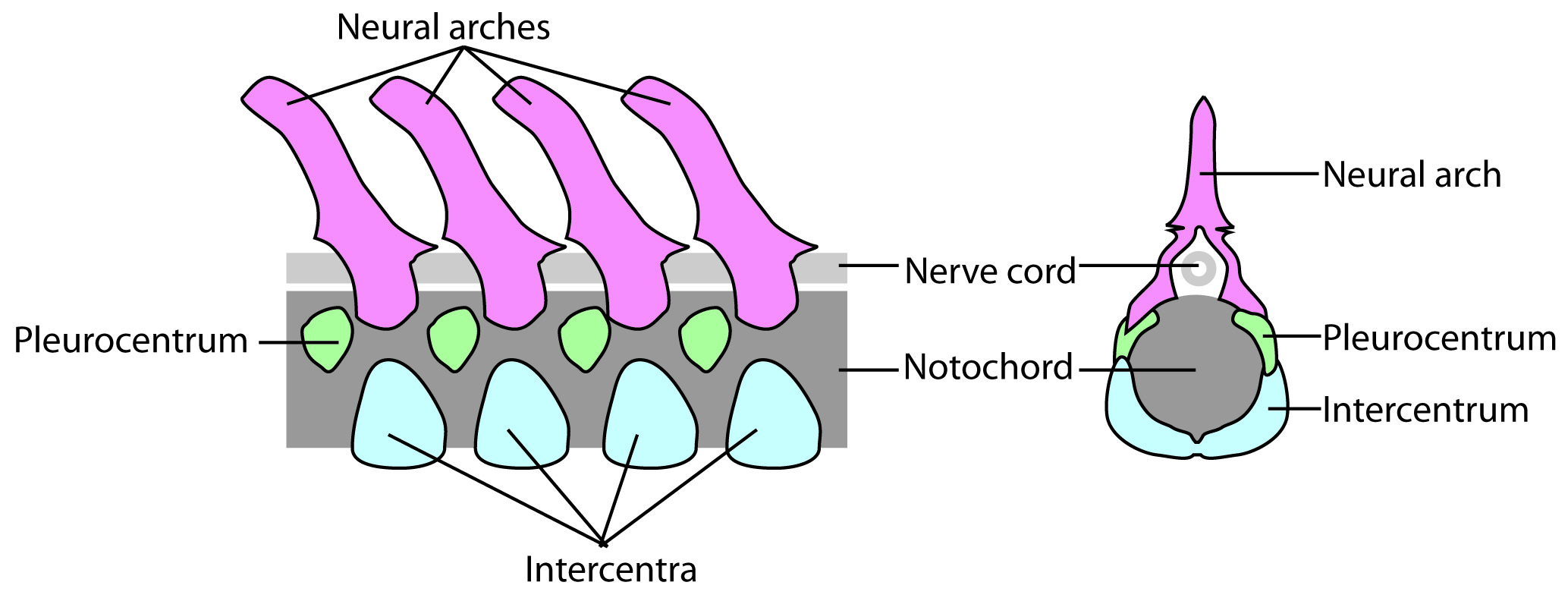
Elements of the vertebral column: The schematic (right) shows these elements as they might have appeared in an aquatic sarcopterygian like Eusthenopteron.
- Neural arches: Elements roofing the spinal cord and protecting it from the side. In their most primitive manifestations, these are paired elements, though in most vertebrates, they meet above the spinal cord to roof it completely.
- Intercentra (sing. intercentrum): Ossification of the notochord. These are shaped like orange segments, and occupy the ventral mid-line of the notochord. Not paired.
- Pleurocentra (sing. pleurocentrum): Paired elements lying to the side of the spinal cord, dorsal and posterior to the intercentra.
Different lineages of vertebrates have modified these elements in various patterns:
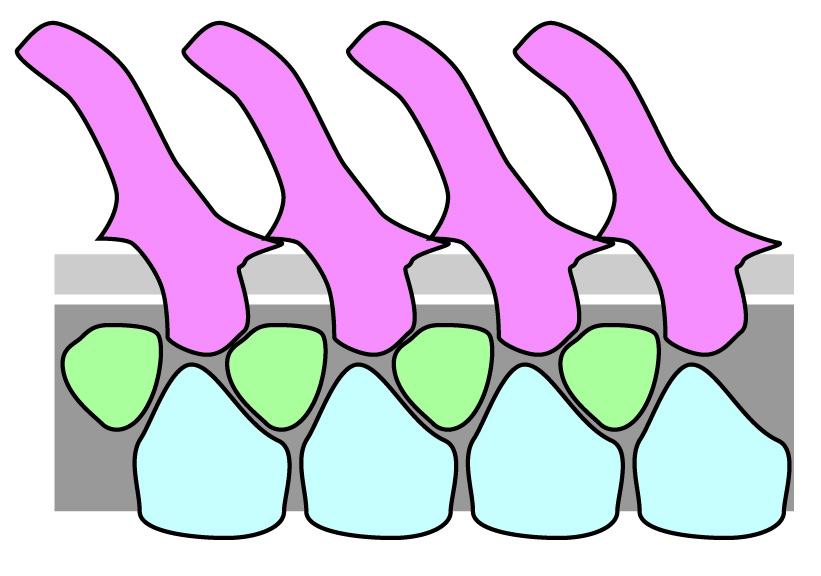
Rhachitomous vertebrae
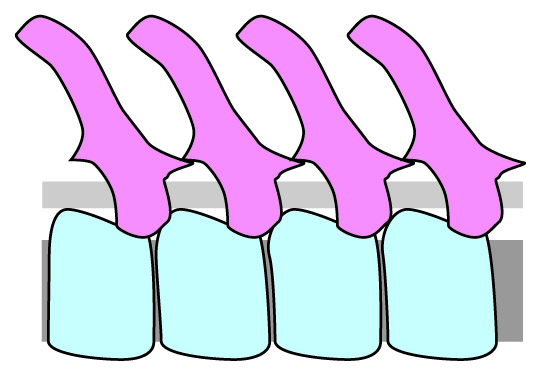
Stereospondylous vertebrae
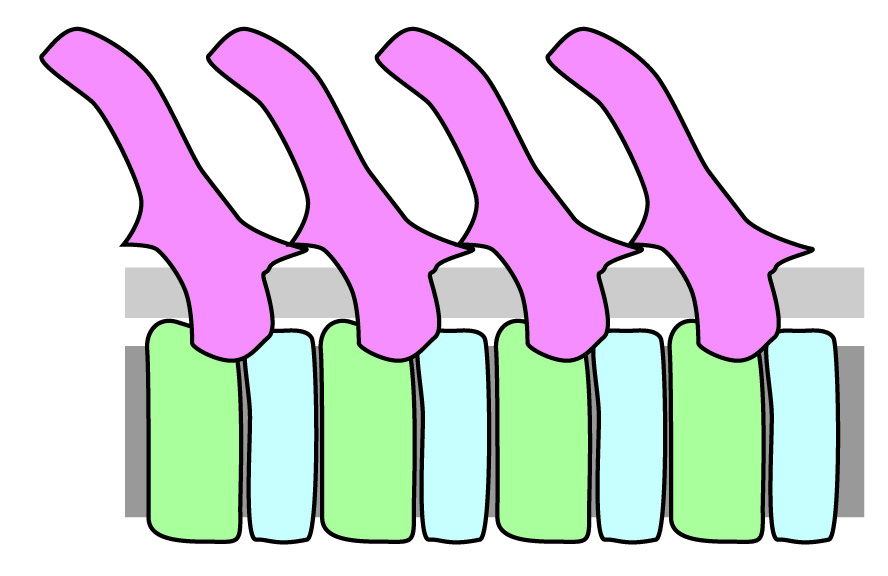
Embolomerous vertebrae
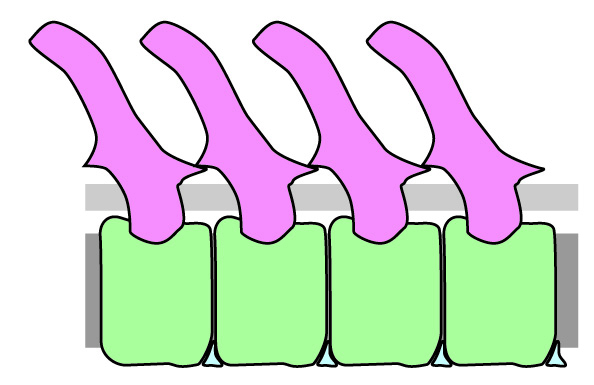
Gastrocentrous vertebrae
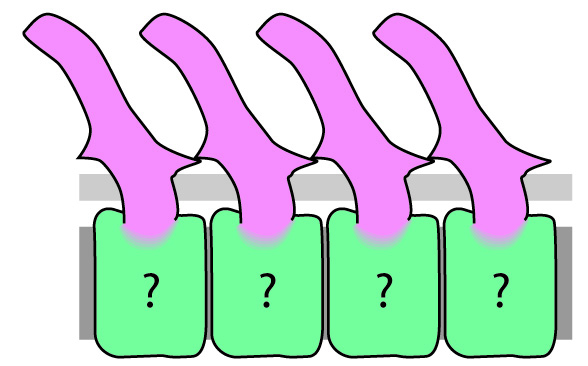
Holospondylous vertebrae
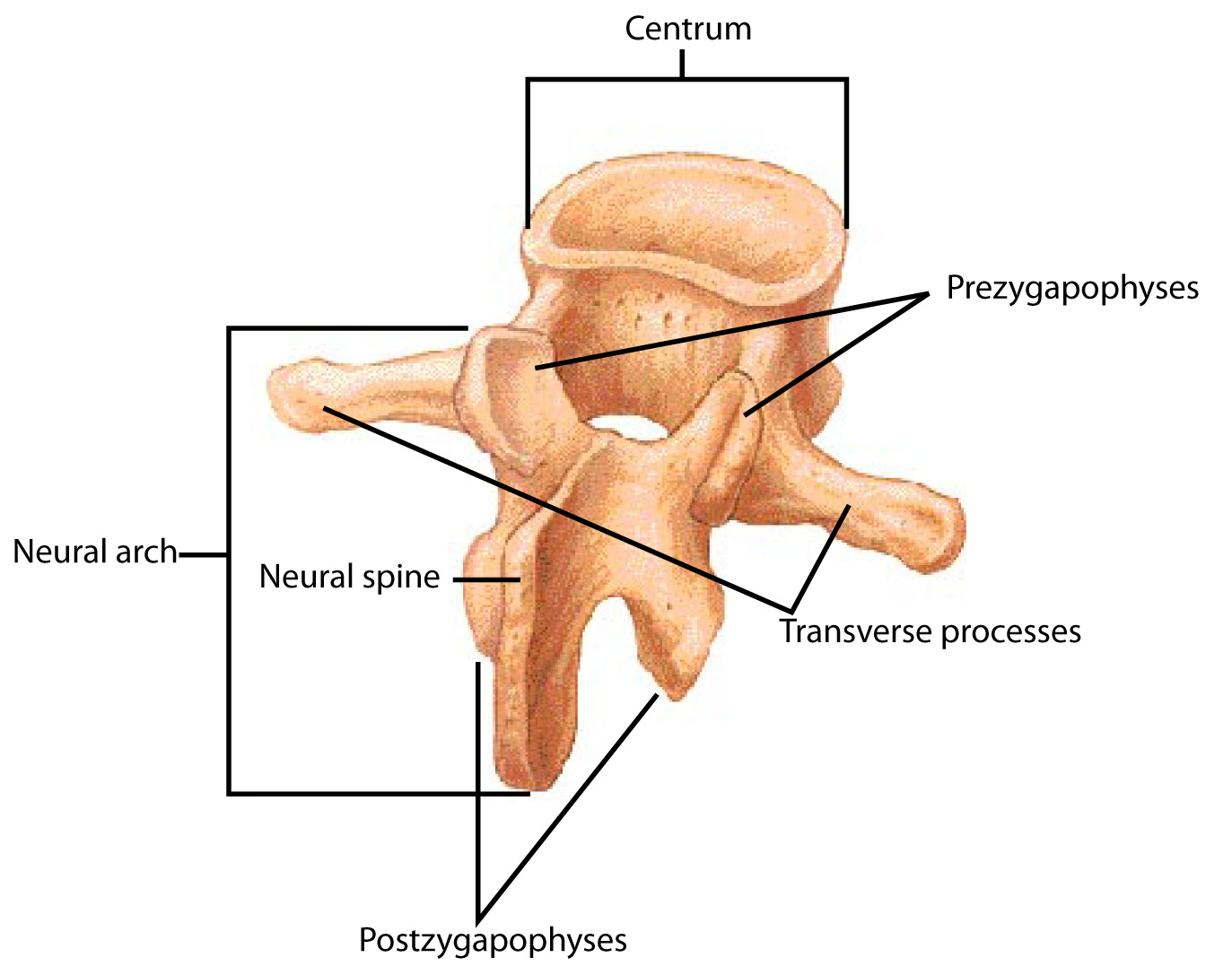
Mammalian dorsal vertebra
- Zygapophyses: Paired processes bearing articular surfaces by which neural arches articulate.
- Prezygapophyses in front
- postzygapophyses in the rear.
- Transverse processes: Insertions points for muscles that rotate the vertebral column laterally and articulation points for the ribs.
- Neural spines: Insertions points for muscles that rotate the vertebral column dorsally and ventrally.
Test yourself:
